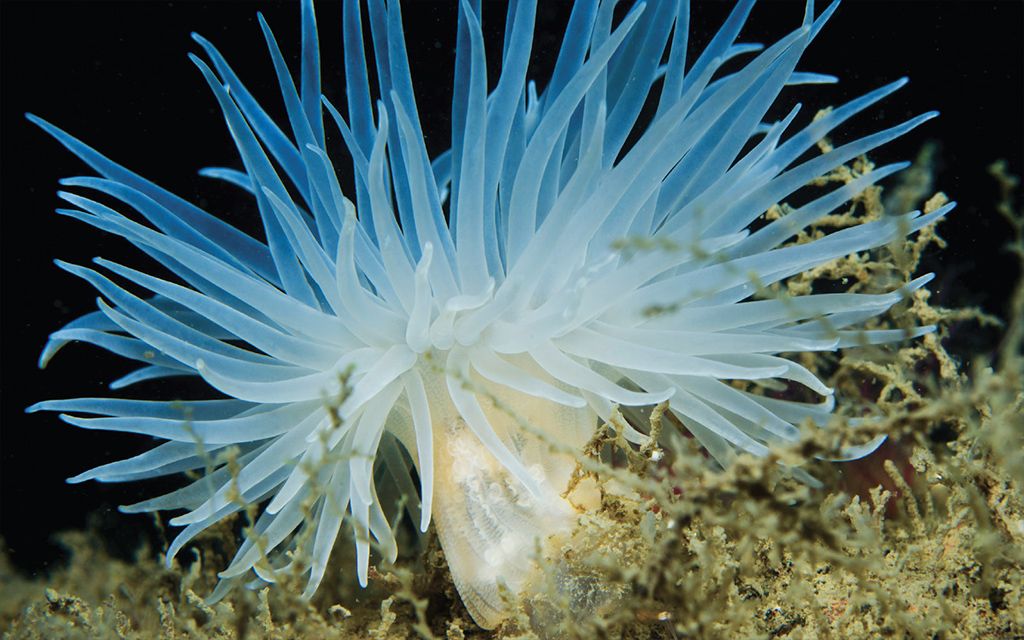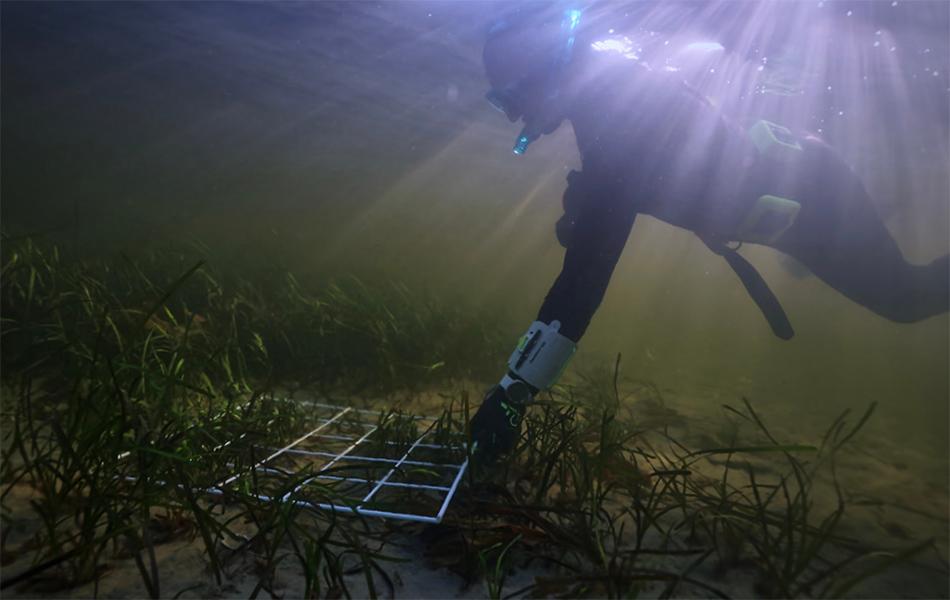
Karen Boswarva likes a muddy bottom. Here, she describes their importance to the UK’s network of marine habitats.
One thing you’ll get used to as a scuba diver on the west coast of Scotland is the muck diving! Am I right? Those sea lochs offer us an opportunity to dive no matter what the weather (usually) but it does come at a visual cost. My first ever sea loch dive was during a Dive Leader training trip with my uni club. We were being taught distance line, and boy did we need it! Losing my buddy and instructor within seconds of entering the darkening plume was an experience I’ll never forget.
It certainly didn’t put me off. Glorious mud is found throughout the UK in shallow estuaries and bays, to the deeps of sea lochs and beyond. It comes in many forms, sandy mud, muddy sand, gravelly mud, soft, sticky mud.
Mud is made up of varying compositions of water, clay, and silt sized particles (less than 63 micrometres in diameter). The more clay – the stickier, the more water - the wibblier, and the more silt – the grainer the mud appears. If you see a Seasearch diver sticking their finger in the mud they’ve not lost their mind, they’re recording the mud type. In a lab you use sieves and fancy lasers.
As mud is found in such differing compositions and depths it forms many habitats, all of which support diverse communities of species
Mud even has its own colour chart. The Munsell colour chart is that extensive, I’ve known scientists use it to pick paint for their house. Defining the colour of mud provides key information on the mineral and chemical composition of the sediments when they were laid down. Darker colours indicate organic material and low oxygen environments, while whites, greens, yellows and reds suggest the presence of fossils, sulphur, chlorite, and iron respectively.
As mud is found in such differing compositions and depths it forms many habitats, all of which support diverse communities of species.
Most animals that love mud live burrowed within it. The terms ‘benthic’ and ‘infauna’ are used to describe these species. They are mostly hidden from divers, but you will see their burrows, casts, mounds or siphons. You need a microscope to identify the really small ones. These animals are the powerhouses of the seabed. A healthy muddy bottom can have thousands of tiny creatures per metre squared, constantly moving about down there, disturbing sediment particles, enabling oxygen to penetrate deeper. Oxygenated sediments promote nutrient recycling which balances and supports healthy ecosystems. All creating a positive circle of muddy goodness.
Next time you open a map app, take a broader peek around the edges. Spot the brown swirls of mudflats and estuaries hugging the UK coastline. These vast, muddy intertidal and shallow subtidal areas are the transitional zones between land and sea, where silt and clay run off from the land and settle. They are important feeding grounds for wading birds, whose beaks are even adapted to feed on specific benthic species that thrive there.
Two seagrass species (Nanozostera noltei and Zostera marina) grow on intertidal and shallow subtidal sandy mud sediments in the UK. Their rhizomes (root-like shoots) bind the mud, providing protection from coastal erosion whilst the lush meadows provide a refuge and nursery ground to commercially important fish and shellfish species.
Subtidal mud habitats are low energy, sheltered environments. They contain regional, nationally scarce and commercially important species that are susceptible to disturbance, damage, and sedimentation. In Scotland, deep soft mud habitats occur close to shore due to the nature of the underlying geology. This means that larger burrowing species such as seapens (Virgularia mirabilis, Pennatula phosphorea, Funiculina quadrangularis), fireworks anemones (Pachycerianthus multiplicatus), and langoustine (Nephrops norvegicus) can easily be seen by divers at recreational depths.
So whether it’s by wellies, snorkel, or SCUBA gear, I urge you to get figuratively stuck in the mud this year.
Article ‘Glorious mud! by Karen Boswarva first published in SCUBA magazine, Issue 155 May 2025.

 Author: Karen Boswarva | Posted 27 May 2025
Author: Karen Boswarva | Posted 27 May 2025



